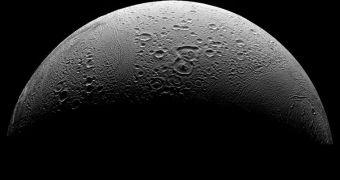Following new studies conducted on the Saturnine moon Enceladus, astronomers determined that this object is the most likely in the solar system to contain life. It exceeded its companion moon Titan in this area only recently.
Until now, astrobiologists believed that they had the highest chances of finding life at other locations in the solar system except Earth on Titan. There are a number of traits the object has that led them to this conclusion.
For once, it features an atmosphere that is capable of supporting several chemical cycles, as well as clouds, thunderstorms, rain and lightning. The moon also has liquid lakes at its poles, filled with hydrocarbons such as methane and ethane.
These, coupled with other factors, made experts believe that Titan is their best bet for finding alien life close to Earth. But new data suggest that Enceladus is that object, as evidenced by experts meeting at the SETI Institute's Enceladus Focus Group last week, in Mountain View, California.
“It has liquid water, organic carbon, nitrogen [in the form of ammonia], and an energy source. There is no other environment in the Solar System where we can make all those claims,” Chris McKay said.
The expert holds an appointment with the Moffett Field, California-based NASA Ames Research Center (ARC). He adds that the moon also has functional geysers, which release organic material and water vapor through cracks called tiger stripes, at Enceladus' south pole.
These discoveries, which were made using the NASA Cassini orbiter, indicate the presence of an ocean of liquid water below miles of ice. The probe also showed that the matter this moon releases contributed to fueling Saturn's E ring.
Experts say that microorganisms potentially living in the submerged ocean may not use photosynthesis as a power source. Instead, they may be using hydrogen to synthesize methane from carbon dioxide.
On Earth, ca lass of microbes called methanogens is capable of doing this. “The fact we see a lot of methane makes it interesting,” McKay told attendants at the conference, Daily Galaxy reports.
At the same time, while our level of knowledge about the moon has increased substantially since Cassini arrived at Saturn, there are many mysterious aspects related to the object that we have yet to comprehend and study.
One of them is the fact that Enceladus produces one order of magnitude more heat than computer models suggested was possible. This was established using Cassini's composite infrared spectrometer (CIS) instrument.
“The mechanism capable of producing the much higher observed internal power remains a mystery and challenges the currently proposed models of long-term heat production,” explained Carly Howett, a member of the CIS science team, and an expert at the Southwest Research Institute in Boulder, Colorado.

 14 DAY TRIAL //
14 DAY TRIAL //